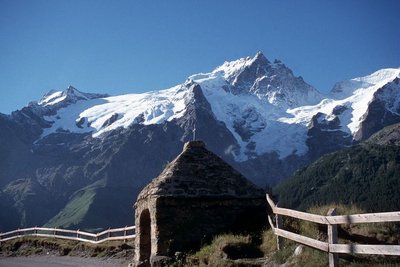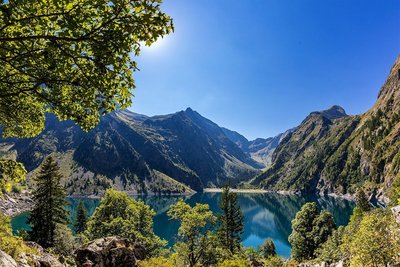
Tour of Oisans and Ecrins
The Tour of Oisans and Ecrins footpath is one of the three great hiking trails in the French Alps (with Mont Blanc and the Vanoise),
but it is without doubt the most unspoilt of all, and the hardest too: 184 kilometres, 14 mountain passes and over 12 800 metres of inclines.
Leaving from L'Oisans, the GR 54 footpath takes you on a journey through mountain villages, deep valleys and high Alpine passes, watched by emblematic wildlife, discreet but present.
13 steps
Description
From Le Bourg d'Oisans, the Tour of Oisans and Ecrins footpath begins its grand tour with the help of handrails to reach the small villages perched on the mountainside. It descends towards the Sarenne mountain stream and then goes up to the mountain pass, with a panorama over the Monts de Lans. We then go down towards Clavans and the Ferrand valley, before a fine climb as far as Besse-en-Oisans, at the edge of the vast Emparis plateau. Above, Col de Souchet offers a five-star view over the Meije. A descent of almost 1000 metres leads to La Grave. You then walk along the River Romanche as far as its source on the mountain pastures of Villar d'Arène. When you arrive at Col d'Arsine, the spectacle is astonishing. The mountainous setting is an invitation to visit the Arsine glacier lake before beginning our long descent along the Petit Tabuc mountain stream as far as the Guisane valley and Monêtier-les-Bains. Our destination is Vallouise via Col de l'Eychauda and the peaceful chalets of Chambran. 8 km of road along the Onde mountain stream bring us to the Jas Lacroix alpine pastures. Crossing Col de l'Aup Martin, the highest point in all the tour, is always rich in adventure, and the descent towards the Pré de la Chaumette is equally exciting. To reach Lake Vallonpierre and Valgaudemar, you have to take care crossing no less than three mountain passes carved out in the schist. Along the Séveraisse, the footpath joins La Chapelle-en-Valgaudemar and then rises through Villar Loubière as far as the Souffles refuge and the impressive Col de la Vaurze. Equally impressive is the descent towards the unspoilt Valjouffrey. The rich green Col de Côte Belle contrasts with the schist landscapes we have seen until now. Valsenestre, in the Béranger valley, comes as a well-earned break before we set off for the last few twists and turns. We arrive at the vertical Col de la Muzelle, leading to the Vénéon. One last mountain pass takes us to the biggest lake in L’Oisans, the Lauvitel, and we are back in Le Bourg d'Oisans. We have come full circle!
You can follow the GR® 54 footpath either from Le Bourg d'Oisans, L'Argentière, La Grave or from any other village along the way.
- Departure : Le Bourg d’Oisans
- Towns crossed : Le Bourg-d'Oisans, La Garde, Huez, Le Freney-d'Oisans, Clavans-en-Haut-Oisans, Besse, Mizoën, La Grave, Villar-d'Arêne, Le Monêtier-les-Bains, Vallouise-Pelvoux, L'Argentière-la-Bessée, Champoléon, La Chapelle-en-Valgaudemar, Villar-Loubière, Valjouffrey, and Les Deux Alpes
140 points of interest

Le clocher de Besse-en-Oisans - François Labande - PNE  History
HistoryBesse-en-Oisans
The arrival in Besse-en-Oisans leaves no hiker indifferent. Besse, with its listed historic buildings, is the kind of village you will never forget. With its stone houses built closely together, as if for protection from the rough winters, and its narrow streets inviting visitors to take a stroll, Besse deserves more than a passing glance.
Why not take a break at the terrace of the Café des Touristes, next door to the village’s only grocery shop, or a little further up, in front of the bakery where they serve the traditional Tourte de Besse?
A welcome break before the steep climb up to the peaceful Alpine pastures of Emparis. Almost 3000 hectares of playground facing the grandiose panorama of the Aiguilles d'Arves and the Meije.
La cascade de Sarenne au départ du GR 54 - © Florence Chalandon  Water
WaterSarenne waterfall
Less than 100 metres after the start of the GR54 footpath, you arrive at an impressive waterfall. This is a daughter of the Sarennes mountain stream, which takes its source in the glacier of the same name in the Alpe d'Huez ski resort. It then rushes down a steep-sided valley before reaching the village of Huez, and then plunges into a gorge linking it to the River Romanche. A refreshing break before taking on the first climb of this grand tour.

Zones humides du Rif Tort - © Parc national des Écrins - Jean-Pierre Nicollet  Flora
FloraThe wetlands of the Rif Tort
Temperatures on the Emparis plateau are characteristic of a cool steppe climate. It is a very windy plateau with an average annual temperature only just above zero degrees. Winter lasts for eight months, during which it freezes almost every day. The particularly severe temperature constraints in the Rif Tort catchment area have favoured the maintenance of a relic flora adapted to these extreme conditions since the last ice age. «Arctic-Alpine»plant formations are found here. This is a relic flora inherited from advancing glaciers in the Quaternary period, comparable to the flow found on the coasts of the Far North. These formations are particularly rare in Europe and are of very high heritage value. You might see numerous protected species here: bicoloured sedge, sweet grass (a boreal relic species, sole colony in Isère) and the sago pondweed. Livestock grazing in the marsh is necessary because it limits the development of herbaceous plants which could squeeze out the Arctic-Alpine species. A delicate balance needs to be found between the trampling likely to destroy the plant species growing in the low marshes and the passage of the flocks to encourage rejuvenation of the area, and thus maintain this habitat.
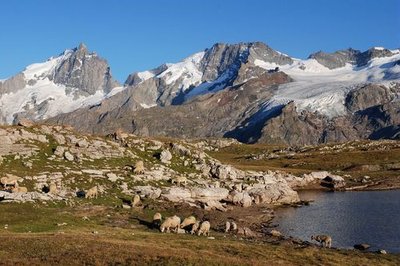
Troupeau d'ovins sur le plateau d'Emparis - Denis Fiat - PNE  Panorama
PanoramaThe Emparis Plateau
The mule path follows the edge of the Southern border of the plateau which is completely dedicated to pastoralism and tourism. It offers an exceptional view of the Meije whose marked relief contrasts with this gentle landscape. It welcomes 7 refuges and pastoral cabins as well as remarkable fauna, like the Mountain Hare and the Mountain Apollo butterfly. The challenge for this site is to preserve its pastoral character.

Petit apollon sur sa plante hôte (saxifrage faux aizoon) - Bernard Nicollet - PNE  Fauna
FaunaSmall Apollo
The Small Apollo is a rare and protected butterfly. It has finely striped black and white antennae, and a tiny red ocellus (eye) on each of its forewings. With a wingspan of 60 to 80 mm, it is the lord and master of the orangey-yellow beds of mountain saxifrages where it takes care of its eggs and feeds its caterpillars.

Cincle plongeur - Robert Chevalier - PNE  Fauna
FaunaWhite-throated dipper
Perched on a large, partly immersed pebble, the dipper sways to and fro with its tail aloft, and then dives down head first into the swirling water. This surprising passerine is unusual in moving underwater against the current in search of food. Thanks to a thin membrane protecting its eyes from the water, it can spot its prey (worms, small shellfish, water insect larva), before lifting its head out of the water and letting the current carry it gently along. It then takes up a new surveillance position and starts the process all over again.

 Panorama
PanoramaChazelet perch
To test your head for heights, there is nothing like this new, life-size game played facing the Meije a steel walkway suspended over empty space. The first few steps are daunting, but reaching the end of the walkway – or rather, empty space – calls for even more courage! Beneath your feet, all the way down below is the village of Les Fréaux, nestling against the Romanche, and above you, the giants of ice. If you add in the element of air, with gusts of wind blowing all around you, then strong sensations are guaranteed!

Massif de la Meije vu du Chazelet - PNE  Architecture
ArchitectureSainte-Anne du Chazelet oratory
Although it stands beside an ordinary road, the Chazelet oratory is famous for one of the most beautiful panoramas of the Alps and the Meije mountains. Built in dry stone, the edifice is at 1 834 m and overlooks the valley and the Ecrins and Meije mountains. It has been sketched, photographed and painted many times, including in the famous Meije by the Japanese painter Foujita.
Recently a new orientation table was placed a few metres above the oratory. In two parts, it shows the northern slope of the Meije and the southern slope in the direction of Chazelet and Savoie.
Terrasses, au hameau des Terrasses - Jean-Pierre Nicollet - PNE  Vernacular heritage
Vernacular heritageLa Grave terraces
On the south-facing slope of La Grave, terraced farmland and villages are inseparable. This is a European-wide landscape uniting many architectural, archaeological and natural elements. This mountain farming system was shaped mainly by past and present agricultural activity. The steep terrain at the time required terracing for it to be farmed. These former planted terraces are today natural meadowland, which is mowed or used for grazing. It is highly sensitive to this new pastoral usage, and is little by little showing signs of soil erosion.

Eglise ND de l'Assomption à la Grave - Jenny Selberg - OT Hautes Vallées  Architecture
ArchitectureNotre-Dame de l’Assomption Church
Listed as an historic monument, Notre Dame de l'Assomption church towers over La Grave. In First Romanesque style, this remarkable building is thought to date from the 11th century, making it the oldest building in the town. All around the church is a cemetery with graves marked by wooden crosses and decorated with brass hearts, facing the giants of ice.

A Villar d'Arène: le four chauffé 15 h est à point, on enfourne - Jean-Pierre Nicolet - PNE  Know-how
Know-howVillar d’Arène communal oven
Pies, raviolis and crozet pasta are some of the main culinary specialities in Villar d'Arène, but above all it is the famous Pô Buli (“boiled bread”) that has made the village’s reputation. Once a year, in November, the village inhabitants make this bread using an ancestral recipe. For over 500 years, it has been kneaded with rye flour and boiling water, and then baked in the communal oven in the centre of the village, near the Penitents’ chapel.
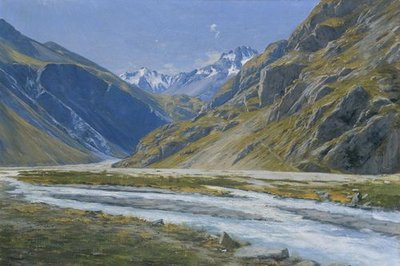
Vallée de la Romanche, Charles Bertier - © Musée de Grenoble  History
HistoryRomanche valley, Charles Bertier
The Romanche was a source of inspiration for many mountain artists and it have been painted repeatedly. Charles Bertier (1860-1924) was inspired to paint Vallée de la Romanche au Pied-du-Col and Les Fréaux près de la Grave, two oil paintings that were painted in 1894. The artist from Grenoble learnt to paint landscapes with Jean Achard, and mountains with the abbot Guétal and did not hesitate to set up his easel on the high summits of the Dauphiné Alps. More to the point, his mission was to make his contemporaries 'understand the mountains'!
Marmotte au printemps - PNE - Papet Rodolphe  Fauna
FaunaThe marmots’ "bosse"
The alpine marmot is naturally present on grass at altitude. Here, it occupies a singular place which we call the marmots’ "bosse». This hibernating rodent is only visible between April and October. The marmot lives in a family and respects a hierarchy. Games, grooming, fighting and biting ensure the dominance of a couple as well as the cohesion of the group. Each animal participates in the delimitation of the territory by rubbing its cheeks on rocks and also by urinating and defecating there. When there is danger, the marmot emits a high and powerful whistle in order to warn the others.

Swertie vivace - Bernard Nicollet - PNE  Flora
FloraFelwort
In early August, the felwort’s violet stars open in the sunshine. At the base of each of its five petals, two shiny pits full of nectar attract insects. A member of the gentian family, this beautiful flower is a perennial that survives the cold season with its persistent winter bud close to the ground, surrounded by a rosette of protecting leaves.
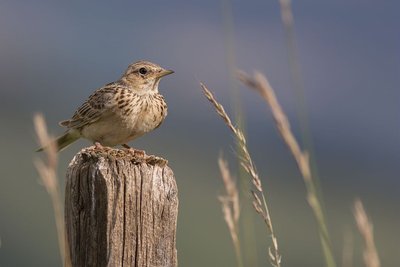
L’alouette des champs - PNE - Saulay Pascal  Fauna
FaunaSkylark
This bird is like a tightrope walker suspended in the sky, sounding out a long chorus of notes. Then, triangular wings back, and in a perfect spiral, the bird lands in the middle of the prairie. On the ground, it is difficult to see: its varying shades of brown means it is very well camouflaged. In its search for food, its movements, which are a succession of small sprints and sudden halts, enable it to spot possible predators.
La bergeronnette des ruisseaux - PNE - Saulay Pascal  Fauna
FaunaGrey wagtail
The grey wagtail elegantly hops along the rocks at the riverside. They are found in mountain streams, but also near all waterways in the mountains, in the countryside or in towns, and even small high-altitude lakes. Like other wagtails, they continually wag their long black tails edged with white. They have yellow breasts like the western yellow wagtail, but their backs are ash grey. In the mating season, males proudly show off their black throats, making it easier to tell them apart from females, whose throats and breasts are partly white. Their pinkish claws are specific to the breed, since other wagtails’ claws are black.

Satyrion (papillon de jour) - PNE - Delenatte Blandine  Fauna
FaunaButterflies and moths
Butterflies can be distinguished from moths by the shape of their antennae. You will also notice that when resting, the butterflies wings are vertically folded over the body for necessary discretion while the moth's cover them. The moorland clouded yellow butterfly has another unusual habit: as soon as it becomes too cold to fly, it settles and bends its side to the sun to absorb energy. It can even lean slightly, whereas others tend to fully, and dangerously spread themselves out.
Solitaire mâle sur une euphorbe - PNE - Delenatte Blandine  Fauna
FaunaMoorland clouded yellow
The heath surrounded by heather and willows is the home of a population of unusual and protected butterflies: the moorland cloud yellow. Elsewhere, it lives in different environments, such as blueberry heaths and peatland, where the moorland clouded yellow is rare and hard to spot. It can be recognised by its yellow display delicately sprinkled with grey under the rear wings of the male, while the female of the species has adopted almost purely white wings. They both wear a simple pink border highlighting the edge of their wings, with a tiny white ocellus (eye) encircled with brown and a discrete grey crescent.

Eaux turquoises du Petit Tabuc - PNE - Coursier Cyril  Water
WaterWater colour in the meanders
The turquoise colour of the water that meanders from the Petit Tabuc stream gives a special character to this remarkable site. The valley is popular among photographers and artists for its photographic and pictorial quality.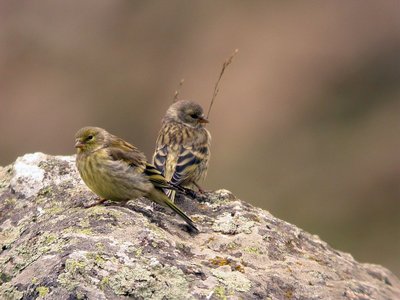
Deux venturons montagnards - PNE - Combrisson Damien  Fauna
FaunaAlpine citril finch
A small green-yellow-grey bird sways on a tall branch. Chet! The Alpine citril finch flies off to land on a scrap of threadbare grass. It looks like a small greenfinch, but the strident cry it makes during its short flight clearly sets it apart. Its head and breast flanks are a pretty blue-grey colour. Its yellow wing stripes can be easily seen. When flying over longer distances, its undulating flight is reminiscent of a goldfinch’s. And just like its cousin, the finch is sociable and moves about in small groups when exploring some sparse group of nettles or grass.

Aigle royal dans la brume - PNE - Telmon Jean-Philippe  Fauna
FaunaA flying predator
The eagle is the archetypal predator. Everything about it suggests strength and daring. Its appearance, of course, with its impressive expression highlighted by the prominent brow ridge, but above all its fearsome weapons: rapid flight, which can be adapted to even the most acrobatic situations, and sharp, powerful talons. Its keen eyesight helps it detect its prey, from the marmot to the young chamois, ptarmigans and hares. In winter, it often takes its food from the dead bodies of animals, helping towards the natural cleansing of nature.

Mélezin - PNE - Quellier Hélène  Flora
FloraLarch
The larch is the only European resinous tree to lose its needles in winter. Its wood is red-brown. It stands out in the landscape with its leaves ranging from a soft green colour in spring to gold in autumn. Its pink flowers attract naturalists and photographers in the spring. The larch tree is a coloniser of mountain slopes. Although it is at home in the harsh conditions of the mountainside, it cannot bear competition from other trees. The Petit Tabuc site is a fine example of its colonising capacity, even though it is regularly hit by avalanches.

Aigle royal - PNE - Combrisson Damien  Fauna
FaunaGolden eagle, the Ecrins' mascot
The Petit Tabuc site is ideal for the golden eagle to nest. The golden eagle is amongst the protected species that are considered rare in Europe. The size of the populations that have been registered in the Ecrins massif, bestow a strong responsibility on the Park for conservation of the species. Counting takes place regularly since 1985 along with monitoring of reproduction, causes of disturbance and mortality.

Jeune merle à plastron - PNE - Saulay Pascal  Fauna
FaunaRing ouzel
In the pastures covered with larch or 'bush", a cry of alarm followed the start of a song resounds. A blackbird? Yes, but more specifically a ring ouzel. This shy, swift mountain blackbird lives on the fringe of the larch, scots pine, spruce or Swiss pine forests between 1000 and 2500 m in altitude. The ring ouzel is a migratory bird that spends winter in Spain or North Africa before coming back to the mountains around March.
Chamois mâle au moment du rut dans le vallon du petit Tabuc, à proximité du Mônetier-les-bains - Cyril Coursier - PNE  Fauna
FaunaChamois
Rupicapra rupicapra, the mountain goat was not at first solely a creature of the mountains. The species is more attached to rocky escarpments and steep slopes than high altitude. But strong human pressure on chamois made them withdraw ever higher. Coveted as a hunting target, they have found refuge here in the Ecrins National Park.

Cincle plongueur avec son repas dans le bec - Damien Combrisson - PNE  Fauna
FaunaWhite-throated dipper
The mountain streams relinquish their secrets to an attentive hiker. The master of this little world is a small brown, red and grey bird with a short tail and a pure white breast, separated from the darker abdomen by a light brown stripe. We can often see it in the air, flying close to the water to snap up insects. The dipper owes its name to its eating habits to find water larva, it dips its head into the water and grips the riverbed to walk against the current.

Deux jeunes blaireaux - PNE - Fiat Denis  Fauna
FaunaEuropean badger
You will often see a badger at nighttime on the edge of a path, a road or an embankment. The gentle pace and portly gait of this member of the mustelid family are reminiscent of a small bear you may get a glimpse of his black and the white stripes on his head before he hurries away. Worms, reptiles, frogs, fruit and plants are his staple diet. Families of badgers live in sometimes very extensive and very old burrows, with numerous chambers and galleries. They are tolerant animals, since they will sometimes share their home with rabbits and foxes. Badgers are among the unobtrusive neighbours whose presence goes undetected, except for their footprints made up of five nearly parallel toes and the tracks of their long claws.

Le moineau soulcie - PNE - Combrisson Damien  Fauna
FaunaLover of old stones
The rock sparrow is a sedentary bird. It generally settles in well-exposed, agricultural areas where there are lots of stones, stone terraces, ruins, piles of stones, old buildings. This southern sparrow can be found up to an altitude of 2000 m provided there is an open landscape and many mineral elements. It nests in the hole of a rock, in a wall and sometimes under the roof of a house. It will then mingle with the house sparrow. A sociable bird, it lives in small, dispersed colonies.
Le murin à moustaches - PNE - Corail Marc  Fauna
FaunaWhiskered bat
The whiskered bat is a dark-faced bat. It is quite common in certain mountain regions and is one of the most frequent species after it cousin the common pipistrelle. It likes trees, be they on the banks of a river or in the high altitude forests, but it is also possible to catch sight of them in gardens and villages such as the hamlet of Casset. This small mammal lives on flying insects and thus helps in controlling their numbers. Like all mammals, the female feeds her sole offspring with her milk.
1.Ventaux de porte décorés, 2.Arcs en plein-cintre, 3.Marteau en bronze forgé, 4.Imposte en éventail - PNE  Architecture
ArchitectureDoors and courtyards
As you stroll through the streets of Le Casset, some house doors will attract your notice, as they bring together most of the decorative elements of the facades. Made of larch wood, they have been moulded or sculpted with geometric or floral patterns and have a tympanum above them, often with a grating. Behind the door is the courtyard, the shared entrance for people and animals. The way people lived and organised their homes resulted in this single entrance, an area giving access both to the stable and to the living quarters. Between the world inside and outside, the courtyard provided a passageway, insulation, but also storage space.
Le moineau soulcie - PNE - Combrisson Damien  Fauna
FaunaRock sparrow
The rock sparrow is here at the north-western limit and highest altitude of its home territory and regularly nests in the area. The species is in decline nationally and is on the endangered ‘red’ list in Rhône-Alpes and is being studied in the PACA region. People sometimes pay little attention to house sparrows since they are so familiar, which is a pity. The rock sparrow is bigger and although its plumage is similar to a female house sparrow’s, its call sets it apart at once: pi-yip or pi-yui or even a chay sound that is similar to a brambling’s!
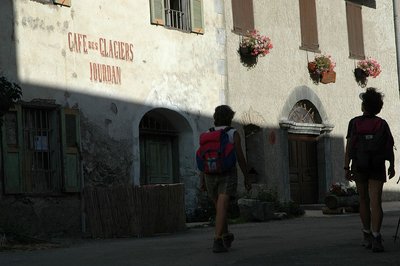
Dans le hameau du Casset - PNE - Masclaux Pierre  History
HistoryLe Casset
At the entrance to the valley, Le Casset is a stone shell village surrounded by farming landscapes. Its name comes from the verb 'cassare' ('to break, to shatter' in late Latin), describing a place covered with stones. In fact there are many such villages in this mountain valley carved out by a vast glacier. Le Casset, on the left bank of the Guisane, is sheltered from avalanches beneath the watchful eye of the prestigious summits and glaciers that “move” in a different time scale from our own.

Cadran solaire au hameau du Casset - Claire Broquet - PNE  Architecture
ArchitectureSundials
As you walk through the village of Lauzet, you will see recently made sundials made in traditional style. Easy to see from the main village streets, they adorn the beautifully restored facades of the old houses.
 Architecture
ArchitectureSaint Claude’s church in Le Casset
With its disproportionately high spire, the Casset church never goes unnoticed. Its four-sided Comtois steeple was modelled on the collegiate church in Briançon. The church is listed as a Historic Monument and is placed under the protection of Saint Claude. In its present condition, it dates from the 18th century. The previous building was constructed prior to the 16th century. Inside, the eye is immediately attracted by the choir ogives, creating an intimate atmosphere, particularly since the unusually large spire does not suggest an interior of such a small size. The choir was rebuilt in 1716-1717, probably after the previous chapel burnt down. Traces from this period can be seen on the keystone. The wrought-iron choir gate has the inscription "HM 1717", a date that can also be seen in the apse, on the wrought iron railing of the impost of the axial window, and on the baptismal font.

La station de Serre Chevalier 1500 au-dessus du hameau des Guibertes - © Parc national des Écrins - Jean-Pierre Nicollet  History
HistoryThe Serre Chevalier resort
At the edge of the Ecrins National Park, the Serre Chevalier ski resort extends over several towns and villages on the right bank of the Guisane, from Monêtier-les-Bains to Briançon. Founded in 1941 with the Chantemerle cable car, it has the biggest ski area in the southern Alps with 61 ski lifts on all levels from an altitude of 1,200 m to 2,830 m to Pic de l'Yret (Le Monêtier-les-Bains). The resort’s logo is an eagle, in reference to Baron Borel du Bez, Briançon’s representative in 1792 at the Legislative Assembly, which ruled France between 1792 and 1795, during the French Revolution. Le Bez is a hamlet in Villeneuve that was united with the Chantemerle ski resort in the 1970s.

Chapelle Saint-Antoine du Charvet - © Florence Chalandon  History
HistoryCharvet Chapel
Near the arrival of the old Charvet button lift, dating from 1948 (still present, but disused since the end of the 2003/2004 season), is the Charvet chapel, which was built in 1755. Easy to access both in summer and winter from Le Monêtier, it provides hikers with a wonderful panorama over the southern Guisane valley.
It is quite unusual for a chapel in the region to be dedicated to Saint Anthony of Padua rather than to Saint Anthony the Great. Was there a shift in patronage over time? The fact the saints had the same name led to the particular qualities of each one being mixed up.
Vallon de l'Eychauda - Office de tourisme Pays des Écrins  Pastoralism
PastoralismThe old hay meadows
Lower down as you cross the area, near the pastoral Cabane de l'Eychauda, you can make out piles of stones, the clapiers formed by the removal of stones from the hay meadows. In order to feed the livestock right through the winter, it was necessary to garner a large amount of hay! With changes in livestock farming practices, there are no longer cut for hay, but used for grazing. Only a tiny area of the valley - the flattest - is still mown for hay, mechanically.

Les deux versants du vallon de Chambran - Marie-Geneviève Nicolas  Geology and geography
Geology and geographyThe front of the nappes
The two slopes of the Chambran valley are very different: the right bank, minerals are very present. There are granites and gneiss making up the crystalline base of the Ecrins massif. On the left bank, the prairies are sandstone and chalky. These are part of the glacial thrust sheet: they are ancient sediments deposited mostly to the East, in the Alpine ocean, then carried here by compression at the time of the formation of the Alps.

Troupeau de brebis - Mireille Coulon - PNE  Pastoralism
PastoralismEvolution of pastoralism
In the valley, the ruins of numerous piles of stones resulting from the removal of stones in the hay meadows are witness to another age. Most of these old prairies are now grazed by sheep. Pastoralism has evolved: no more local flocks so less hay, the valley is now occupied by a large flock from the Haute-Provence Alps.

Parc à moutons - Office de tourisme Pays des Écrins  Pastoralism
PastoralismThe realm of sheep
Together with its entire catchment area, the Chambran valley constitutes an enormous alpine pasture. Sheep belonging to several different owners are gathered here for the summer grazing season. Many of them come from the department of Alpes-de-Haute-Provence. The landscape (sheep paths, old hay meadows), vegetation, built structures (old dairy, pastoral cabins)... everything has been marked by centuries of animal husbandry.

Le hameau de Chambran - Marie-Geneviève Nicolas - PNE  History
HistoryChambran Hamlet
At an altitude of 1700 meters, this hamlet is inhabited in summer, at the beginning of the summer pasture. The old dairy has been spruced up to become a snack bar. It’s pretty little chapel dedicated to Saint Jean is very simple and bare.

Les chalets de Chambran sous la neige - Marie-Genevève Nicolas - PNE  Vernacular heritage
Vernacular heritageChambran chalets
Remnants of a way of life that has disappeared, the Chambran chalets were once a high-altitude village where flocks stayed during the summer months. Today this is a welcome stop along the GR54 and the starting point for hikes towards Lake Eychauda.

Le Canal du Béal Neuf - Office de tourisme Pays des Écrins  Water
WaterASA of Béal Neuf
The ASA (authorised water user association) of Béal Neuf is the owner of the canal. The association manages, maintains and develops the Béal Neuf canal which carries water to the entire network of irrigation canals.

Gouttes d'eau sur une feuille de tremble - Mireille Coulon - Parc national des Écrins  Flora
FloraThe aspen
The path runs through a small aspen wood. This tree with a smooth, greenish trunk and rounded, crenelated leaves takes on magnificent autumn colours. The stem, or petiole, of aspen leaves is flat and twisted, so it can be caught by the slightest breeze making the foliage «quake» hence its common name, the quaking aspen. It grows in places where the soil is quite damp.

Martelière qui assure la distribution de l'eau - Office de tourisme Pays des Écrins  Water
WaterWater in the mountains
Since the Middle Ages, canals have been dug to carry water to the crops. The water is diverted by the canals: through the action of gravity, the water flows down the mountain sides. Use of the water is regulated and for any draw-off, the volume is measured.

La chapelle aau Fangeas - Office de tourisme Pays des Écrins  Vernacular heritage
Vernacular heritageThe minor heritage of Pelvoux
Every hamlet has its own chapel. In the territory of Pelvoux, Les Claux has the chapel of Sainte-Barbe with a restored sun dial dating from 1792. The seventeenth-century chapel of Saint-Pancrace is in Le Poët. In Le Sarret, you can admire the chapel of Saint-Joseph and the chapel of Notre-Dame des Sept Douleurs stands in Le Fangeas. Every hamlet has its own communal oven and water fountains as well. Finally, the church of Saint-Antoine is located in the hamlet of Saint-Antoine. It has a sun dial dating from 1810.

L'aulne blanc - Nicollet Bernard - Parc national des Ecrins  Flora
FloraThe grey alder
In the valleys of the Alps and the Jura, the grey alder often grows in place of the black alder, present in many parts of France. Like its cousin, it grows on riversides and plays an important role in stabilising the banks. If it is cut down, its wood is bright orange in colour. But why cut it down?
Le Gyr - Office de tourisme du Pays des Écrins  Water
WaterThe Gyr
Humans are decidedly bizarre animals: they build, knock down and start again. To protect the new infrastructures of Pelvoux, the Gyr was dammed. But, not able to flow as it did before, it deepened its bed, thus placing the foundations in danger of damage. And so works were carried out to widen its bed, allowing it to flow more naturally. This is also more favourable for biodiversity, as well as protecting the developed urban areas.
Vue sur la station de Pelvoux-Vallouise - Pelvoux Office de tourisme du Pays des Écrins  Vernacular heritage
Vernacular heritageThe ski resort of Pelvoux-Vallouise
The route first leads through the small ski resort of Pelvoux-Vallouise, built in 1982. Very family-focused, in winter it's the ideal place for young children to learn to ski, with small lifts lower down, while their big brothers and sisters can ski higher up.
Le calamagrostide argentée - Nicolas Marie-Geneviève - Parc national des Écrins  Flora
FloraSilver spike grass
A grass grows in large clumps on the embankment: silver spike grass. It is adapted to stony, dry and sunny ground. Its inflorescences reflecting silvery-gold glints create a beautiful effect, but they are particularly noticeable in the late summer, when it forms large shimmering bouquets in the evening sunlight.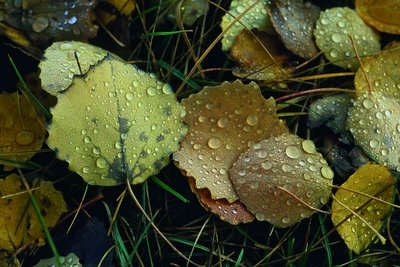
Des feuilles de tremble - Bernard Nicollet - Parc national des Écrins  Flora
FloraThe aspen
On the right, a stand of aspens with smooth, greenish trunks and rounded, crenelated leaves take on magnificent colours in autumn. The stem, or petiole, of aspen leaves is flat and twisted, so it can be caught by the slightest breeze making the foliage «quake» hence its common name, the quaking aspen.

Cincle plongeur - Mireille Coulon - Parc national des Ecrins  Fauna
FaunaThe white-throated dipper
Perched on a rock in the middle of the river, a squat bird with a short tail, brown with a large white bib, bobs up and down with his tail in the air. He then dives and only reappears a few moments later. This is how this bird hunts, diving into the water and then walking against the current along the river bed searching for aquatic insect larvae, small crustaceans or small fish, lifting pebbles with its beak to dislodge them.

Forêt au bord du Gyr - Office de tourisme Pays des Écrins  Flora
FloraForest on the water's edge
This small wood is a fragment of the riparian forest: natural forest growing adjacent to a body of water. Reduced everywhere due to urbanisation, this type of forest is made up of alder, willow and oak, and also poplar, birch and aspen, among others
La truite fario - Parc national des Écrins  Fauna
FaunaThe trout
But what's the angler angling for? The brown trout of course! This is the mountain fish par excellence, with a streamlined body to withstand the current more efficiently and light brown skin speckled with black and red. It lives in cold, oxygen-rich waters.

Torcol fourmilier - Damien Combrisson - Parc national des Écrins  Fauna
FaunaThe northern wryneck
The old trees in the orchard are home to the northern wryneck. It has a loud song, rather like that of the green woodpecker, only slower. This bird owes its name to the extreme way it extends and twists its neck when it feels threatened. Its French name torcol fourmilier is a reference to the fact that it feeds on ants (fourmils in French). Difficult to spot because its plumage merges into the colour of the tree trunks, it gives its presence away by its song when it returns from its migration.
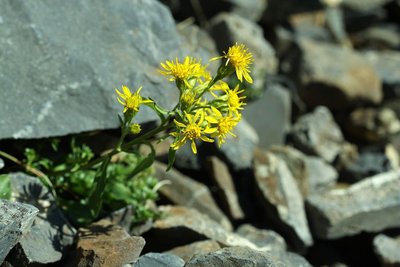
Petite verge d'or - Cédric Dentan - Parc national des Écrins  Flora
FloraThe great goldenrod
In damp spots on the edge of the track, swathes of tall plants grow. It forms great plumes of tiny yellow plants. The great goldenrod, still known as the tête d'or or "head of gold" is a plant native to North America and introduced into Europe in the eighteenth century as an ornamental. Since then, it has colonised a large are of Europe and in some places it even competes with the local flora.

Le morio - Bernard Nicollet - Parc national des Écrins  Fauna
FaunaThe morio
With wings edged with creamy white and sporting a string of little blue dots, a large butterfly takes flight from the path as the walker approaches. This is the morio. Its common French name is manteau royal, or royal cloak (although her cloak is not edged with ermine!) It lives near willow and beech trees because it loves the sap that flows from wounds in these trees. It is one of the few butterflies to hibernate as an adult.

Epilobe en épis - Thierry Maillet - Parc national des Écrins  Flora
FloraThe rosebay willowherb
The rosebay willowherb is a tall, upright plant with elongated leaves. Its numerous purple-pink flowers are arranged in loose spikes at the top of the stem. It forms large clumps, which produce a beautiful display when in bloom. It is a pioneer plant and favours road embankments and disturbed ground. In late summer, its very numerous seeds, each with a little plume, float away en masse glowing in the advancing twilight…
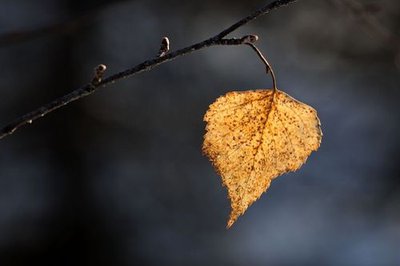
Feuille de bouleau - Mireille Coulon - PNE  Flora
FloraSilver birch
On the edge of the Onde, once you have crossed the footbridge, the stone footpath weaves its way between the birch trees. This tree is easy to recognize amongst all the others due to it thin white bark. Due to the tar that it contains, birch bark stays intact even after the wood has rotted inside. It was used as parchment and as tannin in boreal regions. In this area, the birch's young twigs were mostly used to make brooms.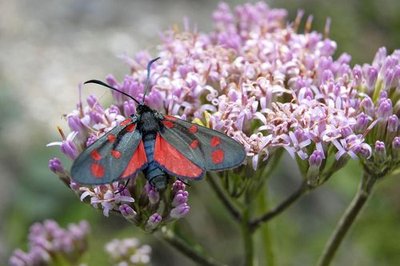
Zygène transalpine - Mireille Coulon - PNE  Fauna
FaunaSoutherly burnet
These small moths that come out during the day, are part of thirty species of burnet in France. Their long wings are black or sometimes bluish and have red spots. Such bright colours are a warning of toxicity to their predators. Burnets are capable of extracting chemical components similar to cyanide from plants. They then secrete this poison through their mouth and joints when faced with danger
Aulne vert - Bernard Nicollet - PNE  Flora
FloraGreen alder
This bushy shrub grows in entangled thickets, which are a refuge to birds and chamois that are in search of coolness and quiet. It is a pioneer and not afraid of settling in poor, steep terrains. Its strong roots mean it can latch on where everything else slides. Its flexibility means avalanches slide over it as it bends under the weight of the snow. The male catkins dangle when they are mature showing the pale yellow of their flowers. The female flowers will bear characteristic fruit like small pinecones that are first green, and then brown that persist all year round.
Jean-Philippe Telmon anime une sorties observation des bouquetins - Pierre Masclaux  Fauna
FaunaThe alpine ibex
In 1995 several ibex were introduced into the Champsaur. Since then, their population has steadily progressed to the valleys of the massif. A small group of ibex spend the summer season on the cliffs of the Chanteloube valley that overlooks the Jas Lacroix hut, on the left bank. They are more often than not perched on the rock faces and are difficult to see but from the hilltop above the hut, you might be lucky enough to see one on the rocks with the help of a telescope.
Quatre bouquetins dans le massif des Cerces - Cyril Coursier - PNE  Fauna
FaunaThe ibex, a survivor
In the face of danger, the ibex does not run away but takes refuge on a rock face where it thinks it will be safe. This strategy has enabled it to escape from land predators for thousands of years. However, it has proved to be inefficient against man since the invention of the crossbow or the rifle. As a result, the ibex was almost wiped out in the 19th century. The species owes it survival to Italy's protection in the creation of a royal reserve, that later became the Gran Paradiso National Park.
Rougequeue noir mâle - Jean-Philippe Telmon - PNE  Fauna
FaunaBlack redstart
The black redstart has a grey crown, a white patch on its wings and a tan tail and rump. A lively and active common bird, it likes the rocky environments and constantly hunts insects in flight or on the ground. Perched on a rock or a stone wall, it gives out brief cries of warning whilst folding it feet. Its chatty song interrupted by "paper rustling" is characteristic. This partly migratory bird can be seen at high altitude during the summer but heads to the lower valleys for the winter.
Soin aux brebis - Jean-Philippe Telmon - PNE  Pastoralism
PastoralismPastoral activity in the Selle valley, dale
Between l’Aup Martin pass and Entre les Aygues, the Selle valley is the communal pasture for Vallouise. During the summer, the pasture is grazed by a flock of sheep, a herd of cows, a few horses and the donkeys that accompany the shepherds. The shepherd's role is to not only keep and guide the sheep on the pasture with the help of dogs. She also nurses them, in particular to avoid foot-rot, a bacterial infection of the hooves that could spread to wild animals.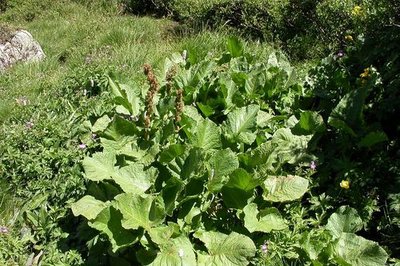
Rhubarbe des moines - Christophe Albert - PNE  Flora
FloraMonk's Rhubarb
Around the pastoral hut, monk's rhubarb forms an ocean of bright green. This species along with Good King Henry and stinging nettles have a love for ample manure. They therefore create vast fluffy carpets on the animals' resting places and around the pastoral huts where they stifle out most of the other vegetation due to its vigorous germination and the damp shade of its large leaves. On its stem, the flower heads that look like candles are made up of uncountable greenish flowers that, when mature, will become winged, three-sided brown fruit. The leaf petioles of this wild rhubarb, which are fleshy, juicy and tangy, can be used in cooking.
Euphorbe faux cyprès - Catherine Boutteau  Flora
FloraCypress spurge
This is also referred to as "milk herb" in relation to the sticky white liquid that flows when it is cut. This is a toxic, irritating latex. It is identifiable due to its thin soft leaves and its original flowers that change colour and group together in inflorescence. By looking closer, in the middle of a 'cup' made from two bracts, it is possible to distinguish a female flower which is reduced to a ball (ovary) on a long stem, and males flowers with a sole stamen and four crescent-shaped nectar glands.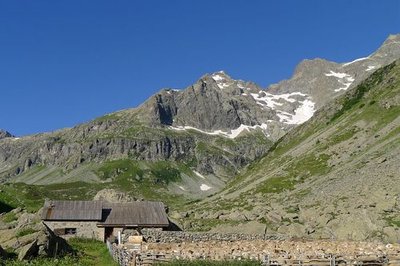
Brebis parquées près de la cabane de Jas Lacroix - Thierry Maillet - PNE  Pastoralism
PastoralismThe pastoral hut and the walkers' shelter
The Jas Lacroix pastoral hut is where the shepherd lives during the mountain pasture period. This where she herds the flock to count or nurse the animals. To the right of the hut there is a shelter for walkers on the GR54 route. It is maintained by a volunteer from the valley. Please leave it in the state of cleanliness you would like to find it.

Chamois mâle dans le vallon de Celse Nière - Christophe Albert - PNE  Fauna
FaunaChamois
In the summer, it is at the coolest times of the day that you are likely to see a chamois busy grazing. When the sun heats the valley, they prefer to lie in the shade of the green alders, or otherwise stay on the névés. Their hearing and their sense of smell are highly developped and makes it difficult to approach them. You will need binoculars to see them. If the end of their horns are curved, it's a male, a buck. Open horns, it's a female, a doe. If the horns are shorter than the ears, it's an 'éterlou', a young male chamois in its second year. Barely visible horns, it's a kid.
Gomphocère des alpages - Blandine Delenatte - PNE  Fauna
Fauna"Popeye" grasshopper
In the pastures, in August, tens of grasshoppers jump and then disappear into the grass with each of our footsteps. Amongst them, the most original is perhaps the gomphocerus sibiricus nicknamed Siberian grasshopper, due to its resistance to the cold. The male is also known as the "Popeye grasshopper" because of its 'muscled' front legs. Its green-brown colour might mean it would go unnoticed were it not for this anatomical detail and it long, consistent "cre-cre-cre-cre" ending with a couple of separate "cre" that it repeats in order to attract a female.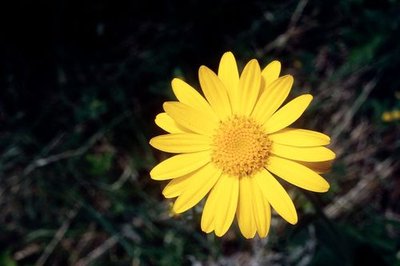
Séneçon doronic - Bernard Nicollet - PNE  Flora
FloraChamois ragwort
In June it impossible not to see these large yellow sun-like flowers on the edge of the path. Their greyish, fleshy leaves look like they have grown through a spider's web. At the end of July they are unrecognisable: the leaves turn green and no longer have the grey fluff. Once the flowers have wilted, they give way to a fluffy white seed head that is easily scattered by the wind. Our elders used to compare them to an old man's hair (senex in Latin) which lead to the French name "séneçon".
Cincle plongeur - Mireille Coulon - PNE  Fauna
FaunaWhite throated dipper
Stocky, short-tailed with a slender beak, it has a white patch from chin to chest and the rest of its plumage is ginger to slate grey. This is the portrait of this fantastic stream-loving bird. Standing on a large, half-immersed stone, it rocks with its tail out. Then suddenly it dives head first into the turbulent water. One of its features is walking upstream in the water in search of food such as small invertebrates that it uncovers by moving pebbles with its beak.
Petite astrance - Bernard Nicolet - PNE  Flora
FloraAstrantia minor
At the top of a thin and fragile, divided stem, four or five small, delicate white stars move in the slightest breeze. The astrantia minor's umbels brighten up the shady areas that it likes under the shrubs on the moors. Its fanned, finely serrated leaves at the end of a long petiole, do their best to emerge from the vegetation.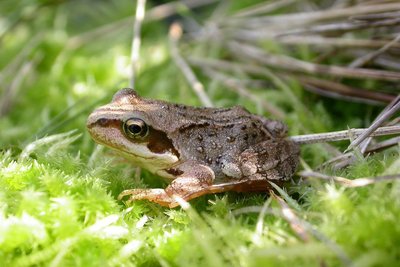
Grenouille rousse sur un lit de mousse - Jean-Philippe Telmon - PNE  Fauna
FaunaCommon frog
After the glacial cross-cliff above the Jas Lacroix mountain hut, not far from the footpath leading to the pass, there is a small lake that is home to the common frog. This is the most common frog in the Alps. It can live up to 2800 m in altitude, a record! It has a chocolate coloured mask around its golden eyes.
Pointe de Verdonne, face Sud, vue du Rouite - François Labande - PNE  Top
TopVerdonne Point
Above the Jas Lacroix hut, the Chanteloube valley opens up to the right in the form of a cirque. The highest peak in the cirque is the Verdonne point, which rises to 3328m. Sometimes a glittering object can be seen at its summit. This a Grand Réseau Radio des Alpes (GRA) radio relay station, serving the mountain rescue network. It is used to make radio contact with police and emergency services in Briançon.

Saxifrage des ruisseaux - Bernard Nicollet - PNE  Flora
FloraYellow (mountain) saxifrage
At the edge of the clear waters of the brook, a flowerbed of yellow stars catches the eye. When young, the flowers are male and only have 10 stamen and a large shiny disc full of nectar. Later, when the stamen have fallen off, they become female and two small nipples appear on the nectar disc, ready to welcome pollen from a younger neighbour. The small rare and protected apollo butterfly has chosen this plant to protect its eggs and feed its caterpillars.
Myrtilles mûres - Christophe Albert - PNE  Flora
FloraBlueberry
This shrub does not venture much higher than the last trees where it constitutes the moors that cover the ground along with other shrubs. Its finely serrated, light green leaves, ever green branches and juicy, sweet, black fruit that turn your tongue purple, make it possible to distinguish it from its cousins. The berries are a true treasure of the mountains and are used for many culinary and medicinal purposes.
Le vallon de la Selle - Robert Chevalier - PNE  Pastoralism
PastoralismCattle
The Selle valley is the Vallouise communal pasture where breeders take their animals in the summer. The pasture is divided into sectors where sheep, cattle and horses graze. Each group moves according to the growth of the grass and they rarely mingle, if at all.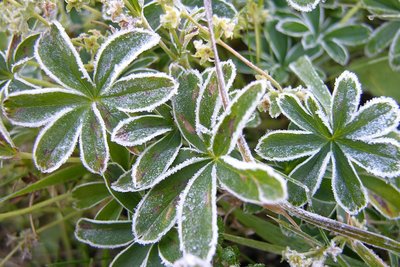
Feuilles d'Alchemille avec givre - Thierry Maillet - PNE  Flora
FloraAlpine lady's-mantle
Lush foliage, five to seven elegant leaflets, simple inflorescence, this plant is also known as "satin lion's foot", and is common along the footpath. This nickname comes from the underside of the leaves. Its flowers are not very attractive to insects. It does not need them for pollination. Its seeds develop spontaneously, without being fertilised: this is called apogamy. Is this why it is used as an infusion by the women of the high areas in all fields of gynaecology?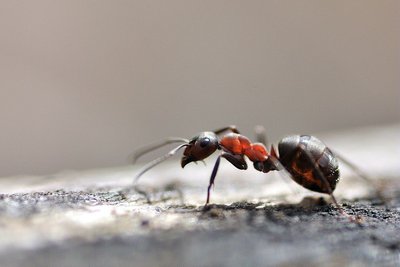
Fourmi rousse des bois - Mireille Coulon - PNE  Fauna
FaunaRed ants
A mound of twigs abounds with life at the edge of the footpath. An anthill in full action. On average it will house 300 000 red ants. This sociable insect is the epitome of perfection. It has strong jaws for digging, cutting and transporting; antennae for communicating and orientating; three pairs of non-slip feet for getting about; compound eyes to see as with a kaleidoscope; a chitin armour and a reserve of formic acid with which to attack. A simple experiment: put your hand close to the anthill, without touching it. Let the ants react then put your tongue to your hand...formic acid!
Raiponce hémisphérique - Bernard Nicollet - PNE  Flora
FloraRampion
Rampion is a pretty, blue flower. On the way up to the Aup Martin pass, it is possible to admire rampion in the prairies and rocky areas at high altitude. A small ball of shiny purple-blue petals and scruffy stamen, it is perched on the top of a short stem surrounded by short narrow leaves.
 History
HistoryWalls
Above the Saume ravine, the footpath’s tight loops are supported by stone walls, the remains of the mule-driver’s path that the army once kept maintained, just in case, between Vallouise and Champoléon...
Champoléon farmers once took their livestock along the path to the Vallouise sheep fair on 4 October.

Marmotte des Alpes - Jean-Philippe Telmon - PNE  Fauna
FaunaMarmot
Along the footpath, the marmot makes the rambler jump with its high-pitched whistle. They live in families made up of a couple of dominant adults and subordinates from successive litters. Grooming, games and fights ensure the cohesion of the group and the respect for the hierarchy. All participate in the delimitation of the territory by urinated or defecating at the boundaries or by rubbing their cheeks against the rocks in order to leave their scent.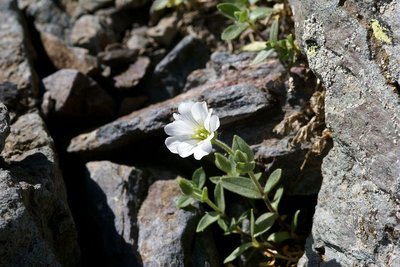
Céraiste à larges feuilles - Cédric Dentant - PNE  Flora
FloraChickweed
It illuminates the scree that the névé take their time to free. Nestled and sticking in the rock, it amazes walkers who admire its delicate foliage and pure white flowers in such a grey environment. How does it manage to produce such exuberant flowers in such a hostile environment though? Beneath the stones, it develops a network of roots that enable it to get vital nutriments from the waterlogged soil when the snow melts. It also produces pliable shoots that always find a place to latch on in the scree.
Vue depuis le col de l'Aup Martin - Thierry Maillet - PNE  Geology and geography
Geology and geographySchist sheets
The Col de l'Aup Martin is a surprising desert of dark grey, shiny schist forming fine parallel sheets. The rock was formed under techtonic influence that laid down the minerals making up the rock in parallel layers. Highly friable, the rock makes access to the col slippery or even dangerous, according to the weather conditions, and has given the col its poor reputation: a monstrous col according to Simon. Exactly like the Mordor region described by Tolkien in The Lord of the Rings, says François!

Gypaète barbu posé avec un os - Mireille Coulon - PNE  Fauna
FaunaBearded vulture
During a worldwide count organised in October each year, an observation post is set up in Le Pré de la Chaumette. The bearded vulture has already been spotted, but alas not each time! Falsely accused of carrying off lambs and children, this large bird with a wingspan of 2.80 m has been persecuted by man. Shooting, capture, poison, together with the scarcity of its food sources led to the bird’s extinction in the Alps in 1930. A European programme to reintroduce it was launched in 1986. Since then, the bearded vulture has been regaining ground.
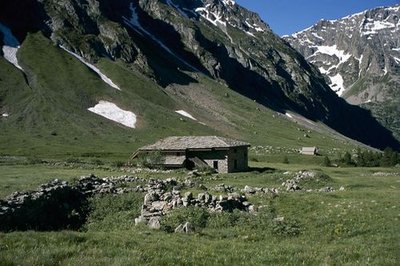
Le refuge du Pré de la Chaumette, Champoléon - Marc Corail - PNE  Pastoralism
PastoralismChaumette Meadow
The refuge is situated in a vast meadow formed by alpine grasslands that benefit from deep soil, on gentle slopes that are covered with snow on an average of eight months a year.

Crave à bec rouge - Damien Combrisson - PNE  Fauna
FaunaRed-billed chough
The red-billed chough is in many ways a surprising bird. It lives near cliffs and plays among the clouds, breaking the silence with a brief, strident, almost metallic cry. Hearing the echo from the cliff walls, its companions reply. With its confident gait and regular step, the red-billed chough patrols the Alpine pastures in small groups, meticulously searching for small worms and meadow grasshoppers. Apart from a few brief seasonal excursions in search of available food, the chough is a sedentary bird.
Le Sirac depuis Vallonpierre - Mireille Coulon - PNE  Top
TopThe Sirac
To the south of the Ecrins mountains, the Sirac is the last major summit at 3441 m. It stands proudly at the end of the Séveraisse valley. Often during the hike, you will lift your head in wonder and greet this noble lord with its crown. You will walk at its foot and see its hanging glaciers above you. It’s magic!
Le refuge de Vallonpierre - Dominique vincent - PNE  Hut
HutThe Vallonpierre refuge
A small lake, pretty meadows and the benevolent Sirac... This magical setting would lead to the construction of a refuge at an altitude of 2270 m in 1942. However, it was a victim of its own success and in 2000 the decision was made to build a second, bigger one. It can accommodate 37 instead of 22. This new building was the first modern mountain refuge to be built using stones on site rather than imported materials. It copies the simplicity and the crow-stepped gable from the "small refuge" which has been kept as lodgings for a warden's helper.
Bouquetin des Alpes - mâle - Jean-Philippe Telmon - PNE  Fauna
FaunaAlpine ibex
The species had almost completely disappeared from the French Alpine regions, and they survived thanks to our Italian neighbours, the kings of Savoy. Until the mid-15th century, they were still to be seen, but they were not wary of mankind and were hunted for their meat. Superstitious medical practice at the period also hastened their decline: their horns were ground into powder and used as a remedy for impotence, while the cross-shaped bone over their hearts was thought to ward off sudden death.
Successfully reintroduced into the Vanoise area in 1960, they were also brought back into the Champoléon valley over 20 years ago.
Vallon Plat, Col de Vallonpierre, Aiguille de Morges - Bernard Guidoni - PNE  Geology and geography
Geology and geographyImpressive geology
From chabournéite, the native mineral of Valgaudemar, to the crystalline rock from the Sirac's gneiss, from the hollow of Vallonpierre made in sedimentary rock to the show that is given by the shale and tuffs on the Chevrettes pass, this circuit will take you back in time. The folds and the colours appear before you like an impressionist’s work of art.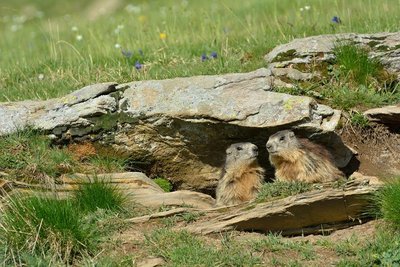
Marmottes à leur terrier - Mireille Coulon - PNE  Fauna
FaunaMarmot
A high-pitched whistle sounds in the mountain pastures it is the cry of the marmot on guard, warning its companions of the arrival of imminent danger from the sky. Any inattentive creature failing to take note should beware a golden eagle will carry them away in its talons to feed its young.
Native to the Alpine grassland, colonies of marmots live with their young until their third year. Gnawing and digging are their favourite pastimes, along with rolling down the slopes. And not forgetting an afternoon nap on a nice, warm rock and their long hibernation between October and March.
Traquet motteux - Damien Combrisson - PNE  Fauna
FaunaHigh altitude birds
Autumn is migration season. The mountains, which are too harsh in winter, loses their inhabitants. Some opt for a change in altitude and go lower down the valley or to the coast. This is the case for the alpine accentor, the redstart, the redpoll, or the Eurasian linette. Others head off on a long journey to warmer countries. The Sahara offers a milder winter to the common rock thrush, whinchat and wheatear. The lesser whitethroat will head to the east. In the summer, this fine bunch will meet up again in the mountains. It finds a sanctuary where the diversity of plants and invertebrates is preserved. The alpine pastures seem to be favourable for the reproduction of all of these species that are diminishing and need to be protected.
Refuge du Clot Xavier Blanc - Dominique Vincent - PNE  Hut
HutClot Xavier Blanc mountain refuge
What a strange idea to build this mountain refuge below the road leading to Gioberney, at an altitude of "only" 1397 m. In fact, it was already there more than a century ago, long before the road was built. This simple, sturdy building belonged to the Valgodemar Mining Company that operated in the area extracting copper and lead. When the business closed, the Club Alpin Français bought the building and named it after Xavier Blanc, in recognition of one of the founder members of the CAF, senator of the Hautes Alpes.
Via Clause du Clot - Dominique Vincent - PNE  Vernacular heritage
Vernacular heritageWalled paths
On certain stretches of the route, you will walk between two stone walls. Such "via clause" were built to stop the domestic animals, on their way up to the pastures, from walking on or eating the grass in the prairies that was intended for them in the winter. The most remarkable "via clause" is on the way out of the hamlet of Le Clot. It has been restored by the Ecrins National Park.
.
Architecture traditionnelle - Yves Baret - PNE  Architecture
Architecture"Toune"
This is an architectural feature of the Champsaur-Valgaudemar area and is the barrel-vaulted porch on the main facade of the house. It sheltered the entrance to the dwelling and stable and was sometimes used to stock items, such as wood, to keep it dry. The "toune" was often painted white to reflect the sunlight. They inhabitants would sit in them to do embroidery or darning, etc.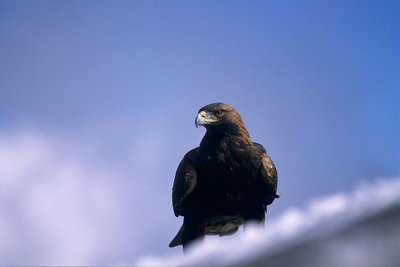
Aigle royal - Robert Chevalier - PNE  Fauna
FaunaGolden eagle
Between La Chapelle and Le Clot, it is not rare to see the golden eagle flying over the sunlit slopes. In the summer, this majestic bird of prey with its dark plumage (some have lovely white rosettes on the underside of their wings) mingles with the short-toed eagle, which is smaller and lighter-coloured, and the griffon vulture, which is larger, with a short tail and often flies in groups. There is nothing surprising about this as the south facing slopes provides thermal lift that enables them to fly high and far.

Maison aux portes, Valgaudemar - Stephan D'houwte - PNE  Architecture
ArchitectureTraditional dwellings
A few typical, old Valgaudemar houses can be seen in the hamlets of Casse, Le Bourg and Le Rif du Sap. A few thatched roofs, vaulted entrances to dwellings ("tounes"), and stone paving, are some fine examples of architecture that are worth saving. Cheaper and requiring less maintenance, sheet metal gradually replaced the thatch on the rooftops.
Itinéraire de Tirière vue sur la vallée de Valgaudemar - Olivier Warluzelle - PNE  History
HistoryToponymy in the Valgaudemar area
Valgaudemar! The sound of this name resonates in our ears. Some claim that it is in reference to the valley of Mary "Gaude Marie" or "Rejoice Mary!" It is more reasonable to think that it is in reference to Gaudemar, the last king of the Burgundians (524) a Germanic tribe that invaded this area in 406...Vallis Gaudemarii can be read in texts as early as 1284. Poetic licence, legends and imagination are often red herrings when it comes to researching the origins of names.
Chapelle et maisons du hameau du Clot avant l'incendie de 1934 - Jean-Claude Catelan (collection)  History
HistoryAn itinerary packed with history
The Casset bridge is the oldest remaining bridge over the Sèveraisse that has not been washed away by floods. On the right bank of this magnificent "Roman" structure, the hamlet of Casset gets its name from the "casse" (large steep scree deposits at the foot of slopes) that surround it. This village, like that of Le Bourg, was partly covered by a landslide. As for Le Rif du Sap, an avalanche swept away the houses from the top of the hamlet in 1944. The hamlet of Le Clot, was flooded in 1928, and was totally abandoned in 1934 when a fire destroyed most of the dwellings.
La cascade de Combefroide - Olivier Warluzelle - PNE  Panorama
PanoramaWaterfalls and view points over the valley
Along the itinerary, you will see the Combefroide and Casset waterfalls that are situated on the south facing slopes of the valley. The route also gives a good view to the east and the west of the Sèveraisse valley from the hamlet of Casset. Downstream, from the hamlet of Rif du Sap, a good example of a U-shaped valley is proof of shaping by the quaternary glaciers.
Gagée jaune - Cédric Dentant - PNE  Flora
FloraHayfields
Hayfields surround the village of La Chapelle. Unfortunately, such natural hayfields, and their flowers and insects, are more and more frequently replaced by temporary hayfields, in other words, certain years they are sowed. These prairies are still watered by the irrigation canals that are well maintained by the users with the help of the National Park. You will see the floodway of the Grande Levée canal not far from the stream as it nears the Sèveraisse. The canals are of great importance for preserving wetland flora, such as alternate-leaved golden saxifrage or yellow star-of-Bethlehem, both of which are protected species.

 Know-how
Know-howSundial by Rémy Potey
A real open-air museum piece in the rural landscape, the pictorial art of the sundial aims to foster silence and to be accessible to all. For walkers today and for travellers yesterday. A sundial is a call to reflection and meditation, visible in all its magnificence on religious buildings or carefully hidden, in the little streets of a mountain village. The the Hautes-Alpes department, with its sun-rich climate, has the highest concentration of this example of the people’s art. Today, through the work of the sundial maker Rémy Potey, chamois and golden eagles can be beside the imaginary birds of the mysterious and famous Zarbula, the 19th century Piedmont artist.

Le moulin de Villar-Loubière - Florence Chalandon ©  History
HistoryVillar-Loubière windmill
As you begin the steep climb towards the Col de la Vaurze, don’t miss the unusual Villar windmill, covered in vegetation. Built in 1838, this legacy from past times has been perfectly preserved with its curious horizontal wheel. It was still in use 50 years ago, milling wheat, but also nuts and rapeseed. It was restored in 1979 and is the last working windmill in the Valgaudemar valley.
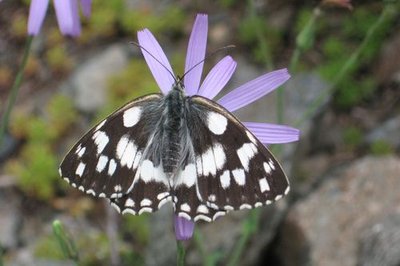
Demi-deuil - Olivier Warluzelle - PNE  Fauna
FaunaButterflies and other insects
Apollos, azure, fritillary, black-veined white, or marbled white...The slopes heated by the sun, flowers that are filled with nectar, everything is in place to attract a cohort of butterflies and other insects on the slopes that lead to the Souffles refuge
Les arraches - Olivier Warluzelle - PNE  Geology and geography
Geology and geographyArraches
From the refuge, or during the climb, a peculiar geological formation may catch your eye on the opposite bank, above the old hamlet of Peines. Sedimentary rocks are trapped in the middle of crystalline formations where erosion has created a specific pattern of erosion that looks like a giant tiger has clawed at the rock. This morphology is what gave it the name Arraches.
Brebis dans un mélézin - Jean-Philippe Telmon - PNE  Pastoralism
PastoralismSheep on the mountain pasture
During your walk, you might come across sheep on the mountain pastures. This is an old form of pastoralism, as proven by the dry stone enclosures that you will see. These are known as 'jas'. You will also notice a rock shelter near to the Clot. The sheep that are in these pastures belong to breeders from the valley or from the Bas Champsaur area.
Tétra lyre mâle - Robert Chevalier - PNE  Fauna
FaunaBlack Grouse
The upper limit of the forest is where you are likely to see the black grouse. The female has faith in her bland-coloured feathering that camouflages her in the vegetation, making her difficult to spot. On the other hand, the male, which is black and white with red "eyebrows”, is not so private, particularly during the reproduction season when their cooing and hissing sounds echo in the mountain in the early morning.
Montée au refuge des Souffles par la forêt de mélèze du Lautier - Bernard Guidoni - PNE  Flora
FloraVariety of the natural environment
This walk is a summary of south facing slopes in the Valgaudemar area. It starts in the warm scree that it more or less vegetated. It then progresses over lawns and moors of juniper, blueberries or bearberries... They give way to mountain ash, whitebeam and amelanchiers indicating that the forest will soon take over. Higher up, the beech forest casts shade on the walkers, next a beautiful larch forest is a sign that the forest environment will give way to the high altitude moors and lawns. The Lautier lake and the surrounding ponds are a haven for aquatic species. Still higher, is the realm of rocks and chamois.
Gentiane - Olivier Warluzelle - PNE  Flora
FloraVariety of plant life
There is a large variety of plant life along the itinerary, particularly on the slopes above the refuge, due to the exposure, the soil types and the altitude. Marjoram, lis, laserwort, houseleek, stinecrop, gentian, columbine, aconite and many others are present.
 History
HistoryParavalanche
In 1961 and 1962 big avalanches descended as far as the riverbed of the Bonne, threatening the houses in the hamlet at Désert en Vajouffrey. In 1982 major works enabled the construction of a paravalanche in order to increase the safety of the hamlet and the prairies, by diverting possible threats coming from the Côte-belle valley.

 Geology and geography
Geology and geographyNew path
The last section of the path allows access to the mountain pass has required numerous days of maintenance since its creation. In fact the unstable character of the soil associated with the steepness of the slope have made it necessary for the rangers to create wooden benches to contain the weight of the earth.. In Autumn 2012, it was decided to create a new section of the path by using part of a sheep track further East in the direction of the Marmes mountain pass. The work was carried out by a team creating 50 m per day during 26 days with pick-axes and courage. In total, it is a section measuring 1300 m which has been created, which makes the path less steep and much more stable.

Lézard vivipare - Damien Combrisson - PNE  Fauna
FaunaViviparous Lizard
The viviparous lizard can be distinguished from the wall lizard by its rounded muzzle. It is capable of living at an altitude of 2500m and you will most often see them in the meadows. It likes to warm itself in the sun, resting on the grass or the dry moss to hunt grasshoppers, crickets or spiders. During the winter, it buries under the ground where in a lethargic state it can survive negative temperatures. The viviparous lizard is named like this because the females keep their eggs in their abdomen up until they hatch. So the young are completely formed when they are born, it is an adaptation to the cold environment.
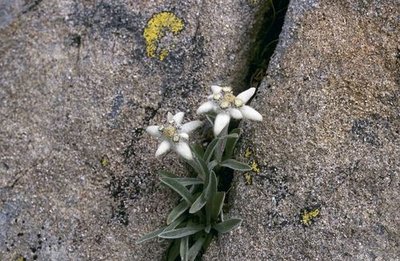
Edelweiss - Marie-Geneviève Nicolas - PNE  Flora
FloraEdelweiss
In Latin léontopodium signifies the foot of the lion which is the general shape of the edelweiss. By looking at it closely, you realize that it is not one flower but a group of 5 to 10 flowers grouped in a flower head. The edelweiss is in the astéracées family like dandelions. It is a white plant, milky and perennial growing in rocky alpine meadows at subalpine level up to 2900 m. It often mixes with the Alpine Aster. The emblem of numerous guides, it symbolizes the high mountains and represents strength in the language of flowers...

Pic de Valsenestre - Bernard Patin - PNE  Panorama
PanoramaLandscape of the cirque de Valsenestre
From the mountain pass, climb the little summit above to better see the landscape which shows the cirque de Valsenestre : on the left is the Signal du Lauvitel (2901m) and the Clapier du Perron (3169m), the mountain pass at Muzelle (2613m) where the GR54 is. At this level you can really see a geological fault separating the Grandes Rousses which are granite from the Muzelle block in gneiss. On the right, the principal summits are the Roche de la Muzelle (3465 m), and the pointe Swan (3294m). Le col de Côte-Belle separates the Pic de Valsenestre (2752m) on the left from the l’Aiguille des Marmes (3046 m) on the right.
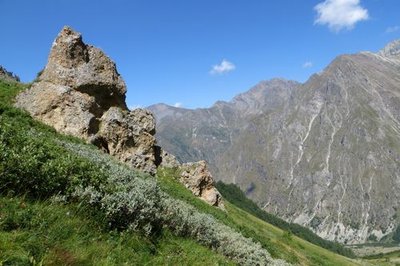
Saule soyeux - Bernard Nicollet - PNE  Flora
FloraEuropean violet willow
This is a shrub in the subalpine tier. It is less than one metre tall and grows in small groups on the ubac. At lower altitude, it may grow taller. You can recognise it from a distance through its characteristic shiny, silvery colour and its growth in circular beds. Adult leaves feel very silky on both sides.

Troupeau de brebis - Mireille Coulon - PNE  Pastoralism
PastoralismFlock of sheep
A flock of sheep belonging to local farmers graze at the summit of the mountain pass near the Pic de Valsenestre. In summer these animals with their thick woolly coats can enjoy the shade of the willows that you can see just before arriving at the col (alt. 2220 m).
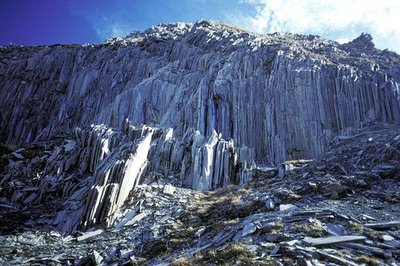
Les orgues au col de Côte Belle - Lucien Tron - PNE  Geology and geography
Geology and geographyCôte Belle organs
A striking geological phenomenon, the big organs , also known as the big library, were formed when the Alps were born. They were formed by thin grey-blue limestone sheets and by more highly eroded soft schistose marl. A series of perpendicular cracks in the layers divide the slabs into remarkable columns.

Ancolie des Alpes - Mireille Coulon - PNE  Flora
FloraAlpine columbine
This is an uncommon and protected species, measuring 30 to 60 cm. The flowers are quite large and have a magnificent blue colour, blossoming at the head of the stem, and are the only ones with afive petals in the corolla. They are not to be confused with the common columbine, which has smaller flowers and is more widespread.

Pleurosperme d'Autriche - Bernard Nicollet  Flora
FloraPleurospermum austriacum
This robust hardy perennial with a thick, hollow and grooved stalk belongs to the parsley and carrot family, and can grow from 60 to 150 cm high. Its large umbels of white flowers bloom from July to September. Very little known, in France it only grows in the Alpine areas and for this reason is worthy of attention.
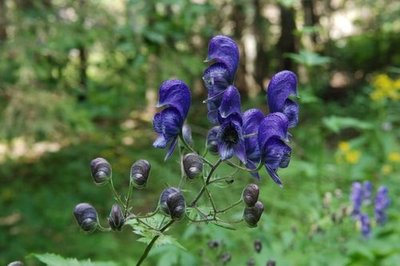
Aconit paniculé - Bernard Nicollet - PNE  Flora
FloraMonkshood
This is a typical plant in tall herb fringe communities, measuring 50 to 100 cm. It has royal blue flowers shaped like helmets and grouped together in loose bunches. Their particularity is that they are highly toxic! Herbivores are aware of this and don’t eat them.

Barrages du torrent du Béranger - Samy Jendoubi - PNE  Water
WaterTimber dams
In the Combe des Echarennes, as you take the path to the left, you can see, in the gorges of the Béranger mountain stream, wooden dams made by the RTM (mountain terrain restoration department of the National Forests Office) to hold back the flow of debris carried down from the mountains during heavy rain and floods.

Mégaphorbiaie - Pierre-Emmanuel Dequest -PNE  Flora
FloraTall herb fringe communities
Tall herb fringe communities form a landscape linked to very precise conditions in terms of climate (wet summers and snowy winters), topography (long ubac slopes where névé sometimes remains on the ground deep into the summer), altitude (subalpine tier from 1600 to 2100 metres) and soil (unsaturated soils with large water reserves).

Prairie de fauche - Marc Corail - PNE  Flora
FloraNatural Hayfields
Agricultural specialists consider a meadow as natural if it has not been ploughed or fertilised over the last ten years. This is the case for those that you will see, surrounded by hedges, at the start of the hike. The meadows have an important variety of plant life and consequently attract multitudes of pollinating insects, including domesticated bees of course.
 Flora
FloraAlpine garden
More than fifty years ago, a botany lover, who is now elderly, created a small alpine garden in the centre of the village. Although it is less well kept nowadays, it still presents a stunning array of colour and a collection of spectacular plants belonging to alpine flora.
La cabane de la Cantine, Valjouffrey - Manuel Meester - PNE  Pastoralism
PastoralismCantine cabin
The dry stone (mortar) huts are an example of architecture without an architect they are the work, not of architects (unlike the religious, military and civilian buildings of the past), but of farmers and workers or masons whose names are now forgotten. These huts have many and varied names, which are mainly derived from regional languages, and which have been adapted into French. The Cantine (“Canteen” in English) huts were used as shelters for shepherds during the summer months, and probably owe their name to the meals eaten in the mountains.
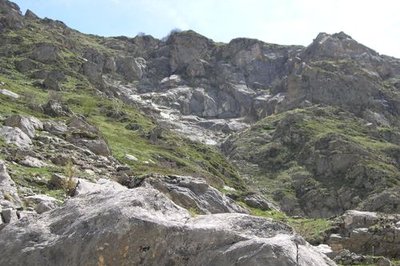
Le front de taille de la carrière - Maurice Séchier  Geology and geography
Geology and geographyCipollino Marble quarry
From the 19th century, a cipollino marble quarry operated here. This marble had a white-green base colour with wavy green veins and a thick layer of mica. Les Cantines (canteen) hut is so-called because it was where the workers would have their meals. It was recently renovated and is used by the shepherd at the beginning and the end of the season.
Parade de tétras lyre - Rodolphe Papet - PNE  Pastoralism
PastoralismPastoral management
From July to September, a flock of sheep occupy this steep valley. A shepherd watches over them and tends to them if necessary. Pastures are divided into sectors that are grazed upon according to a timeframe that takes the exposition and grass resources into consideration. For example, specific agro-environmental measures are in place to preserve the areas where black grouse nest. When the chicks are able to fly, usually after the 15th August, the sheep can head back to the area.

Roches moutonnées - Maurice Séchier  Geology and geography
Geology and geographyGlacier polished rocks
Around 15 000 years ago, the last glaciation ended. As it receded, the glacier left traces of its passage. Indeed, the withdrawal of such huge masses of ice polished the rocks and gave them a rounded shape, which is very apparent from the left bank of the valley. These rocks are known as 'moutonnées".
La montée au col de la Muzelle avant l'aménagement du sentier - Pierre Masclaux  Vernacular heritage
Vernacular heritageMaintenance of the footpath
After many complaints from hikers, the decision was made in 2010 to employ the necessary means to improve security on the route. It took a mechanical 'spider' digger a day and a half to climb all the way up to the pass. It then dug out the footpath as it went down the black shale on a 40° degree slope. Each year, serious manual work is undertaken to ensure that hikers have safe access.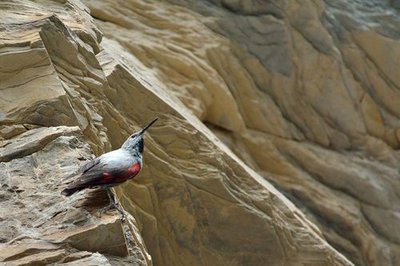
Tichodrome échelette femelle - Mireille Coulon - PNE  Fauna
FaunaWallcreeper
As you get to the last leg before the pass, you may well hear high-pitched whistles. If you are lucky, you will catch sight of the composer of this melody: the wallcreeper, which is a beautiful red, black and white bird. Defying verticality, the wallcreeper uses its long-clawed feet to latch onto the rock faces in search of insects and spiders. Its long beak then enables it to draw them out of the cracks in the rock.

Eritriche nain - Bernard Nicollet - PNE  Flora
FloraAltitude flora
Near to the pass, you will admire small grey-green cushions scattered with white flowers: this is the androsace helvetica, a rare protected species. This altitude plant is perfectly acclimatised to the hostile environment. This is also the case for the mountain saixifrage. Both like limestone, which is not the case of moss campion, small green cushion with pink flowers, or the Arctic alpine forget me not, a small blue-flowered plant that prefer the crystalline rocks here and there across the pass.

La vue générale sur la faille révèle le contraste des roches - Maurice Séchier  Geology and geography
Geology and geographyGeological impact
During this walk, the path takes you past brittle, black sedimentary rocks. At the pass, they come into contact with light-coloured crystalline gneiss: the contrast is surprising! There is a geological fault here where monumental forces have been pushing against each other for millions of years.

Vautours fauves - Marion Molina  Fauna
FaunaGriffon vultures
From the Col du Vallon, you can sometimes see griffon vultures. The bird returned to the mountains a few years ago. Bigger than an eagle, with beige and brown plumage, it generally glides in flight, and its movements are broad and slow. But what characterises the species above all is its gregariousness: griffon vultures like to be together, whether on the ground or in the air. This behavioural adaptation makes it easier for them to find the animal carcasses they feed on.

Aigle royal en vol - Mireille Coulon - PNE  Fauna
FaunaGolden eagles
Several birds of prey cross the skies above L’Oisans. Among them are two couples of golden eagles that share the Muzelle and Lauvitel valleys. They have an impressive wingspan (2.30 m on average), are mostly brown colour, and often hunt marmots at low altitude.
Réserve intégrale du Lauvitel, relevé des lignes de lecture de la végétation - Denis Fiat - PNE  Flora
FloraRéserve intégrale du Lauvitel
The Lauvitel full reserve area was created on 9 May 1995, and is a first in France in a National Park. It lies at the end of the valley and has been owned by the state since 1980. This area, where all human activity is forbidden, is a site for scientific observation of an environment over the long term. Vegetation, animals, water and climate are studied and compared with the data from other sites. Access to the reserve is strictly forbidden except for scientific purposes.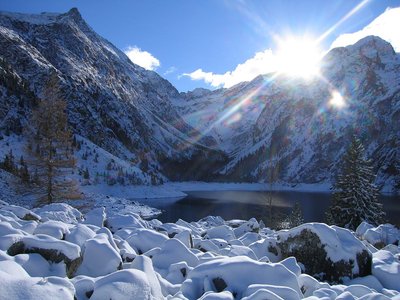
Lac du Lauvitel enneigé - PNE  Lake
LakeLauvitel Lake
Lauvitel Lake is the biggest (around 25-35 ha) and the deepest (40-65 m) in the Ecrins National Park. A rocky landslide around 4000 years ago, added to an existing glacial moraine to form a natural dam capable of retaining such a volume of water. The waters of the lake are cold and well oxygenated. They suit several species of fish including the Arctic Char or the Brown Trout which were introduced for anglers. Today the Lake Lauvitel is the subject of numerous scientific studies: physical parameters, sediment, phyto et zooplankton are collected and analyzed.

La digue du lac du Lauvitel - Denis Fiat - PNE  Geology and geography
Geology and geographyNatural Dam
Around 4000 years ago, a rocky landslide added to an existing glacial moraine to form a natural dam capable of retaining this large volume of water. The seasonal variation of the level of the lake of 20 to 25 m is due to the permeability of the materials making the dam. In fact the lake does not have a spillway and the water infiltrates the boulders of the dam. It offers a beautiful view of the lake which infact inspired the painters at l'Abbé Guétal.

Au châlet de pêche - Denis Fiat - PNE  History
HistoryChalets at altitude
On the Lauvitel dam are ancient prairie chalets as well as chalets that were built between the two World Wars to welcome hunters and anglers. Formally a private property, this valley was rented out to the ‘Bourgeoisie Dauphinoise’ for hunting. Angling, on the other hand, is still practised: it is managed by the Lauvitel Society for private angling. One of the chalets is still used to today to house agents from the Ecrins National Park and scientists from the nature reserve.
Forecast
Altimetric profile
Sensitive areas
- Impacted practices:
- Aerial, Aquatic, Land, Vertical
- Sensitivity periods:
- JanFebMarAprMayJunJulAugSepOctNovDec
- Contact:
- Parc national des Écrins.
Alpine ibex
- Impacted practices:
- Aerial, , Land, Vertical
- Sensitivity periods:
- JunJulAugSep
- Contact:
- Parc National des Écrins
Julien Charron
julien.charron@ecrins-parcnational.fr
Golden eagle
- Impacted practices:
- Aerial, , Vertical
- Sensitivity periods:
- JanFebMarAprMayJunJulAug
- Contact:
- Parc National des Écrins
Julien Charron
julien.charron@ecrins-parcnational.fr
Golden eagle
- Impacted practices:
- Aerial, , Vertical
- Sensitivity periods:
- JanFebMarAprMayJunJulAug
- Contact:
- Parc National des Écrins
Julien Charron
julien.charron@ecrins-parcnational.fr
Bearded vulture
- Impacted practices:
- Aerial, , Vertical
- Sensitivity periods:
- JanFebMarAprMayJunJulAugNovDec
- Contact:
- Parc National des Ecrins - Yoann Bunz- 06 99 77 37 65 yoann.bunz@ecrins-parcnational.fr
Alpine ibex
- Impacted practices:
- Aerial, , Land, Vertical
- Sensitivity periods:
- JunJulAugSep
- Contact:
- Parc National des Écrins
Julien Charron
julien.charron@ecrins-parcnational.fr
Golden eagle
- Impacted practices:
- Aerial, , Vertical
- Sensitivity periods:
- JanFebMarAprMayJunJulAug
- Contact:
- Parc National des Écrins
Julien Charron
julien.charron@ecrins-parcnational.fr
Golden eagle
- Impacted practices:
- Aerial, , Vertical
- Sensitivity periods:
- JanFebMarAprMayJunJulAug
- Contact:
- Parc National des Écrins
Julien Charron
julien.charron@ecrins-parcnational.fr
Golden eagle
- Impacted practices:
- Aerial, , Vertical
- Sensitivity periods:
- JanFebMarAprMayJunJulAug
- Contact:
- Parc National des Écrins
Julien Charron
julien.charron@ecrins-parcnational.fr
Golden eagle
- Impacted practices:
- Aerial, , Vertical
- Sensitivity periods:
- JanFebMarAprMayJunJulAug
- Contact:
- Parc National des Écrins
Julien Charron
julien.charron@ecrins-parcnational.fr
Golden eagle
- Impacted practices:
- Aerial, , Vertical
- Sensitivity periods:
- JanFebMarAprMayJunJulAug
- Contact:
- Parc National des Écrins
Julien Charron
julien.charron@ecrins-parcnational.fr
Golden eagle
- Impacted practices:
- Aerial, , Vertical
- Sensitivity periods:
- JanFebMarAprMayJunJulAug
- Contact:
- Parc National des Écrins
Julien Charron
julien.charron@ecrins-parcnational.fr
Golden eagle
- Impacted practices:
- Aerial, , Vertical
- Sensitivity periods:
- JanFebMarAprMayJunJulAug
- Contact:
- Parc National des Écrins
Julien Charron
julien.charron@ecrins-parcnational.fr
Golden eagle
- Impacted practices:
- Aerial, , Vertical
- Sensitivity periods:
- JanFebMarAprMayJunJulAug
- Contact:
- Parc National des Écrins
Julien Charron
julien.charron@ecrins-parcnational.fr
Golden eagle
- Impacted practices:
- Aerial, , Vertical
- Sensitivity periods:
- JanFebMarAprMayJunJulAug
- Contact:
- Parc National des Écrins
Julien Charron
julien.charron@ecrins-parcnational.fr
Golden eagle
- Impacted practices:
- Aerial, , Vertical
- Sensitivity periods:
- JanFebMarAprMayJunJulAug
- Contact:
- Parc National des Écrins
Julien Charron
julien.charron@ecrins-parcnational.fr
Peregrine falcon
- Impacted practices:
- Aerial, Vertical
- Sensitivity periods:
- FebMarAprMayJun
- Contact:
- Parc National des Écrins
Julien Charron
julien.charron@ecrins-parcnational.fr
Short-toed snake eagle
- Impacted practices:
- Aerial,
- Sensitivity periods:
- MarAprMayJunJulAugSep
- Contact:
- Parc National des Écrins
Julien Charron
julien.charron@ecrins-parcnational.fr
Black grouse - winter
- Impacted practices:
- , Land
- Sensitivity periods:
- JanFebMarAprDec
- Contact:
- PN Ecrins BERGEON Jean-Pierre jean-pierre.bergeon@ecrins-parcnational.fr QUELLIER Hélène helene.quellier@ecrins-parcnational.fr Membre de l OGM ogm.vds@gmail.com ogm.amblard@gmail.com
Recommandations
The best time to do the tour is between late June and mid-September. Find out about weather conditions and snow levels on the mountain passes in early summer.
Some passages, near high mountain areas, cross difficult terrain. It is possible to sleep in the open air all along the GR (see regulations in the National Park / the Emparis plateau and prohibition in certain municipalities) and in campsites, hotels, gîtes or refuges.
On some stages you will need to take your own food with you.
 In mountain pastures, protection dogs are there to protect the herds from predators (wolves, etc.).
In mountain pastures, protection dogs are there to protect the herds from predators (wolves, etc.).
When I hike I adapt my behavior by going around the herd and pausing for the dog to identify me.
Find out more about the actions to adopt with the article "Protection dogs: a context and actions to adopt".
Tell us about your meeting by answering this survey.
Information desks
Oisans Park house
Rue Gambetta, 38520 Le Bourg d'Oisans
Video presentation of the natural resources of the Oisans mountain and its crafts. Information, documentation about the Park, projections, reading space for children. Accessible to people with reduced mobility. Free admission. All animations of the Park are free unless otherwise stated.
Transport
Grenoble SNCF station : https://www.sncf-connect.com/
Airports : Grenoble Isère : www.grenoble-airport.com
ou Lyon Saint-Exupéry : www.lyon.aeroport.fr
ou Geneva : www.gva.ch
Daily bus services between Grenoble-Le Bourg d’Oisans :
https://carsisere.auvergnerhonealpes.fr/
https://www.itinisere.fr/
Access and parking
The Bourg d'Oisans is 50 km from Grenoble by the motorway A48 (exit 8 "Station de l'Oisans), the N85 and the D 1091 from Vizille.
Parking :
Source

Report a problem or an error
If you have found an error on this page or if you have noticed any problems during your hike, please report them to us here:



